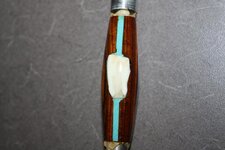I'm also a relative noob, but I'm starting to formulate some opinions.
First, for pens I do like CA. But I have concluded that CA works best when the turning is relatively plain - no pronounced coves or beads. If the design is more adventuresome, the ultimate finish won't be as nice.
Second, finishes can be highly polished (like glass) or a more subtle satin that allows the user to have a better feel of the wood. The former requires more work, and a simpler turning design, while the latter is easier to apply and can be done with more coves and beads.
Third, for bottle stoppers, nothing works as well or as simply as a few coats of sanding sealer followed by several coats of wipe-on polyurethane. Yes, you do have to allow for drying time between WOP applications - I'm learning the serenity of patience.
Fourth, friction finishes seem to work OK for bowls and other ornamental pieces made from harder woods. The don't work very well at all if the wood is soft.
Fifth, if you don't like the finished pen after it is done, it MAY be possible to disassemble it and refinish it. But if you are using one of the low-end slimline kits, the transmission is likely to fail when you try to disassemble the pen. Take the philosophical approach - if you are successful, you are ahead of the game. But if the disassembling the pen to refinish it wrecks the pen, you aren't any further behind than if you simply threw the pen away in the first place and chalked everything up to learning.

